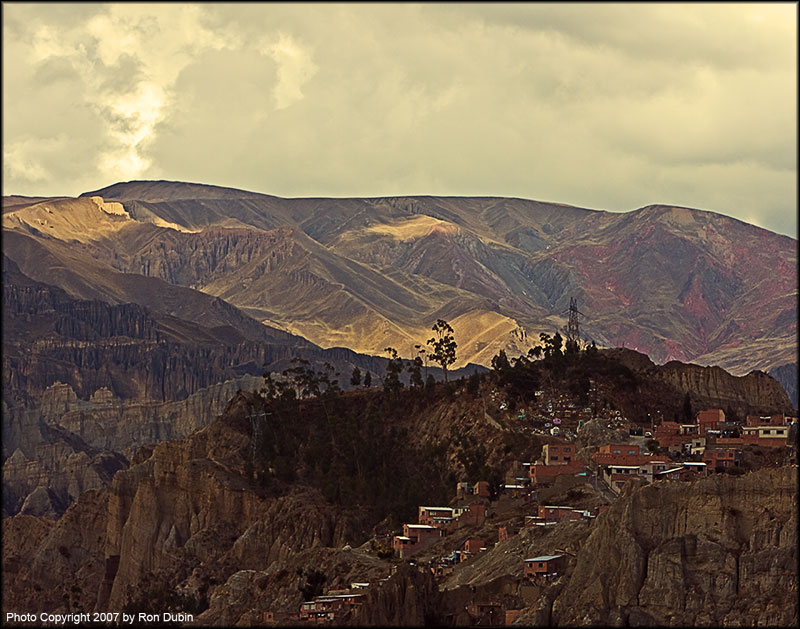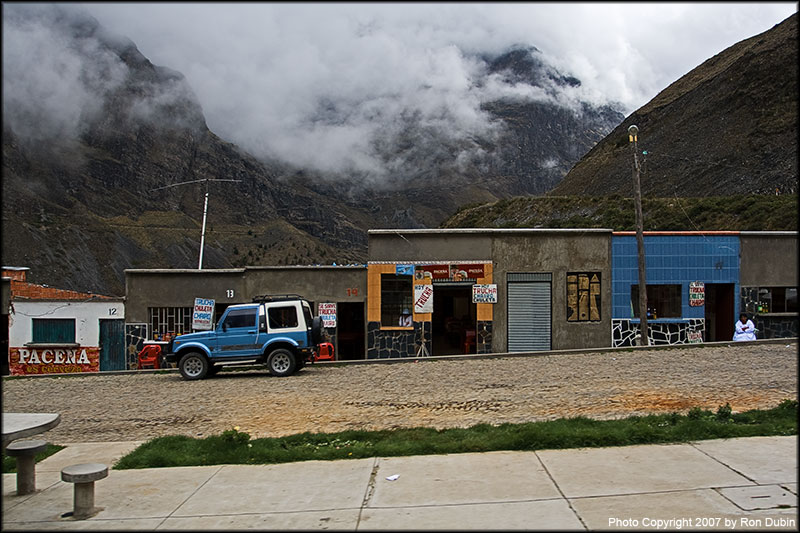Previous: This article pays homage to La Paz Bicentennial, but carries the unseen intention that other people look into the forgotten history of their territories and their link to natural cycles in order to be ourselves again.
___
Nuestra Señora de La Paz
(Our Lady of La Paz)
It was with that name that La Paz was founded in 1548 and behind this name there are other names, local places and beyond, forgotten histories and… the legacy of the people.
Summarizing, name linked to viceroyal struggles in Peru, patron saint of independence struggles but with the name of another virgin, she has Christian origins in a Palestinian mount which has the name of a Syrian god and before that, going back to Times of Darkness, her forgotten history comes back reverberating with Thunder. .
Following, what I found behind the name of Nuestra Señora de La Paz (parts of it were published in Las Pichitankas for July 16, 2005).
On October 20, 1548, Alonso de Mendoza, Spaniard conqueror, looking for viceroyal struggles pacification in Peru, comes to Laja and found a new city: Nuestra Señora de La Paz, which is not the Virgin of Peace.
Rather her religious name is closely related to libertarian outcries from the beginning of XIX century.
In 1818 Chileans ratify her as ‘Patron Saint and General of Chile’s Armies’, already in 1817 she was presented as ‘Patron Saint of the Andean Armies’ when Liberator San Martin presents to her the staff because since July 16, 1810, the day the last Spaniard governor renounced, they attributed the victory to her.
Until today many other places throughout South America recognize her as patron saint, guardian, mother, virgin, protector and other.
In our territories, a year before (1809), also on July 16, rebels from La Paz led by Pedro Domingo Murillo during the procession that carried her in shoulders initiated the Independence Revolution that today, 200 years after we celebrate.
She is the Virgin Carmen, when we say Nuestra Señora de La Paz, ‘La Carmen’ as we also mention her waiting for the snow around July 16, if it falls before it will be a productive year and not very auspicious omens if it is after that date.
Virgin Carmen crossed from North to South through the Atlantic ocean when Spaniard seamen already adopted her as patron saint: the ‘Sea Star’ that guided their journeys, paying homage to her each July 16.
And even way before that, when Crusades expanded their frontiers through Europe and beyond, a religious order decided to settle on the mount that would give name to their order, to the Virgin and would link her history to the Arabs.
It’s Mount Carmel, part of a mountainous chain in Palestinian territory, which carries the name of a Syrian god, where the Order of Carmels inflamed of fervor by the place where Profet Eliah had his visions, built the convent for the ‘Sea Star’, guide to fishermen and seamen, which is non other than Virgin Carmen.
Carmenta is also the Godess that each January 11 was honoured in Ancient Rome, she knew the past and the future, was in charge of births and destiny of newborn. Known by her company, two inseparable nymphs, one always looking ahead and the other one back.
In Carmentals or Feasts of Life sacrifices were offered to her, as we do until today in our territories considering the Carmentals were carried out when fecundation time was approaching in Northern Hemisphere by mid January, mid July in the South.
These feasts were also due to women social struggles when after a game of words – Carmen and carpenta, the last one carriage and hence carpenteer – Romans insisted stubbornly to prohibit their women to go in carraiges (carpentum) even when they were pregnant. Furious remained these ladies due to the imposition and refused to have children; alarmed Romans before the downward birth rate returned to them the right to transport in carriages. The thankful ladies, built Carmenta a new temple and dedicated to her honour a second day, January 15. Since then, January 11 was called the First Carmentalia and January 15 the Seconda Carmentalia. And, besides Goddess Carmenta, fortune-tellers and oracle guides were also called Carmentas.
Hence, this Virgin (Carmen) proceeds from Mount of god Carmelo of the Syrian people, which in our territories carries the name of another Virgin (Nuestra Señora de La Paz), but in fact does not refer to the pacidic state (peace), but rather to the land (La Paz) founded on another date (October 20) and not hers (July 16), as symbol of pacification for other territories’ struggles (Peru) disputed among conquerors (alamagristas and pizarristas) founded in another place (Laja), and then moved to a valley which already had a name (Chuquiabo).
This is also La Paz, and much more remains sleeping in unseen worlds keeping the forgotten history since Purumpacha, the Dark Times, and beyond, but sung by Thunder and sowed by Lightning each July 16.
This is also La Paz, and much more because La Paz is… La Paz
___
Read also:

